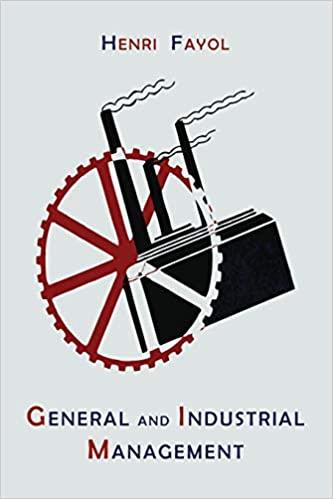Question
What would be a proper response to the below two posts? Post 1. Class, I am discussing the significant role that formal leaders play in
What would be a proper response to the below two posts?
Post 1.
Class,
I am discussing the significant role that formal leaders play in the implementation of strategies.
Strategy implementation is essentially the phase where plans are put into action, making sure that the organization moves forward effectively. Leaders bear the responsibility of overseeing the process that leads to the execution of the strategic plan. They must also continuously monitor progress and make necessary adjustments to keep the initiative on course (Indeed, 2023).
While being a leader doesn't always necessitate holding an official title, formal leaders hold a very important role in this process. Formal leadership involves holding an official position or title as the head of a group (Indeed, 2023). In this capacity, formal leaders are tasked with motivating their team members and assuming crucial responsibilities, such as resource allocation and decision-making. There are pros and cons to most everything. Here are the pros and cons of being a formal leader in efforts to implement strategy referenced by Indeed (2023):
Pros:
- Formal leaders have the authority to make decisions and enforce strategies, ensuring initiatives are executed in line with the organizational vision.
- As formal leaders, they are accountable for the outcomes of strategy implementation, driving them to take ownership and responsibility for success.
- They provide clear direction and guidance to teams, ensuring everyone understands their roles and responsibilities in achieving strategic objectives.
Cons:
- Formal leaders often face significant pressure to deliver results, leading to stress and potential burnout if expectations are not managed effectively.
- Some team members may resist the directives of formal leaders, resulting in friction and challenges in executing the strategy.
- Formal leaders may have a narrow view of strategy implementation, potentially overlooking valuable insights and perspectives from other team members.
These leaders communicate the strategic vision, allocate resources, provide guidance to teams, and track progress. By exercising effective formal leadership, they ensure alignment with strategic objectives, facilitating successful implementation and the achievement of long-term goals (Indeed, 2023).
References Indeed Editorial Team. (2023). Formal vs informal leadership: Definitions and differences. https://www.indeed.com/career-advice/career-development/formal-and-informal-leadershipLinks to an external site.
Post 2.
Hello Class!
In the world of strategy implementation, informal leaders are like the unsung heroes with no fancy titles, but they get a ton of stuff done. These leaders, lacking the formal names, bring some incredible advantages to the table. One big plus is their flexibility, they can pivot on a dime, with no no red corporate tape. Think Steve Wozniak at Apple, the tech genius alongside Steve Jobs who rocked the informal leadership scene making Apple's innovative strategies a reality. Informal leaders are pros at breaking down complex strategies in a way that clicks with the team. Elon Musk's no-nonsense style at Tesla is a prime example. Elon's direct talk and hands on vibe resonate, rallying the troops behind Tesla's bold goals.
They're also the glue between strategy and company culture. Understanding the informal networks and vibes, they make sure the strategy vibes with what the team values. Herb Kelleher, the Southwest Airlines legend, did this with his laid back leadership style, developing a unique culture within the company that had lasting effects.
Yet, it's not all smooth sailing. The lack of a fancy title can be a bit of a buzzkill. They might be quick and agile, but enforcing decisions? Not always their strong suit. We can check the history books, the power hunt between Bill Gates and hotshot developers in the early days of Microsoft. Resistance from the big guys is a real struggle too. Formal leaders can see these informal heroes as threats, creating tension and slowing down the strategy train. Mark Zuckerberg and Sheryl Sandberg's dynamic at Facebook is a classic example.
Then there's the accountability dance. Without a clear job description, informal leaders can dodge blame if things go south. The dot.com bubble burst? Informal leaders got a lighter rap compared to the big hot shots in the corporate world.
To sum it up, these unsung heroes bring a lot to the table. Flexibility, killer communication, and a knack for company culture. But the lack of authority, clashes with the top dogs, and accountability grey areas are real hurdles. It's all about finding the sweet spot between the formal and informal to nail strategy execution.
References
"Elon Musk: Tesla, SpaceX, and the Quest for a Fantastic Future" by Ashlee Vance provides an in-depth exploration. Vance sheds light on Musk's hands-on approach and direct communication style, showcasing how informal leadership traits contribute to the success of Tesla's ambitious strategies.
"Hard Drive: Bill Gates and the Making of the Microsoft Empire" by James Wallace and Jim Erickson offers a comprehensive look. The book explores the power dynamics within the company, shedding light on the balance between Bill Gates formal leadership and the influence of key informal leaders.
Step by Step Solution
There are 3 Steps involved in it
Step: 1

Get Instant Access to Expert-Tailored Solutions
See step-by-step solutions with expert insights and AI powered tools for academic success
Step: 2

Step: 3

Ace Your Homework with AI
Get the answers you need in no time with our AI-driven, step-by-step assistance
Get Started


